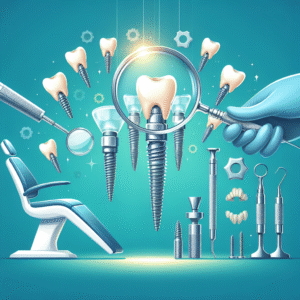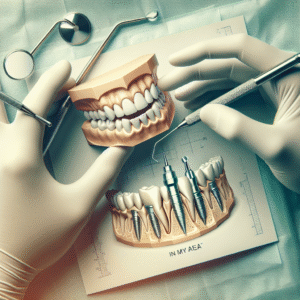The All-on-4 dental implant procedure is a revolutionary solution for patients seeking a permanent, stable, and natural-looking replacement for missing teeth. Unlike traditional dentures, this technique uses full-arch dental implants to anchor a prosthetic arch securely to the jawbone. One of the most appealing aspects of this treatment is the possibility of receiving teeth-in-a-day / same-day implants, allowing patients to leave the dental office with a functional smile almost immediately. However, understanding the recovery timeline is crucial for optimal healing and long-term success.
In this article, we’ll explore the All-on-4 recovery process, factors influencing healing, and how advanced techniques like zygomatic implants and bone grafting for dental implants can affect recuperation.
Understanding the All-on-4 Procedure
Before diving into recovery, it’s essential to grasp what the All-on-4 procedure entails. This technique involves placing four strategically positioned titanium implants in the jawbone—two at the front and two at the back at an angle—to maximize bone contact and stability. These implants support a fixed prosthetic arch, functioning like natural teeth.
For patients with significant bone loss, alternatives like zygomatic implants (anchored in the cheekbone rather than the jaw) or bone grafting for dental implants may be necessary to ensure a stable foundation. Once the implants are placed, temporary implant-supported dentures are often attached the same day, providing immediate functionality.
Immediate Post-Procedure Recovery (First 24-48 Hours)
The initial recovery phase is critical. Here’s what patients can expect:
Swelling and Discomfort
- Mild to moderate swelling around the gums, cheeks, and jaw is normal.
- Discomfort can be managed with prescribed pain relievers or over-the-counter medications.
- Applying ice packs intermittently (20 minutes on, 20 minutes off) helps reduce swelling.
Bleeding and Oral Hygiene
- Minor bleeding or oozing may occur for the first 24 hours.
- Patients should avoid rinsing or spitting forcefully to prevent dislodging blood clots.
- Gentle saltwater rinses (after 24 hours) can aid in keeping the surgical site clean.
Diet Modifications
- Stick to soft foods like mashed potatoes, yogurt, and smoothies.
- Avoid hot, spicy, or hard foods that could irritate the surgical sites.
- Stay hydrated but avoid using straws, as suction can disrupt healing.
Short-Term Recovery (First 1-2 Weeks)
During this phase, the focus shifts to healing and adjusting to the new implants.
Follow-Up Appointments
- A check-up within the first week ensures proper healing and implant stability.
- The dentist may adjust the temporary implant-supported dentures for comfort.
Oral Care Practices
- Continue gentle brushing, avoiding direct contact with surgical sites.
- Use an antimicrobial mouthwash if recommended by the dentist.
Activity Restrictions
- Avoid strenuous exercise for at least a week to prevent increased swelling or bleeding.
- Refrain from smoking or alcohol, as they can delay healing.
Intermediate Recovery (3-6 Weeks)
By this stage, most swelling and discomfort should subside. The implants begin integrating with the jawbone—a process called osseointegration.
Diet Progression
- Gradually reintroduce semi-soft foods like pasta, scrambled eggs, and steamed vegetables.
- Still avoid chewing hard or sticky foods directly on the implants.
Monitoring Healing
- Some patients may experience minor soreness, especially if bone grafting for dental implants was performed.
- Follow-up X-rays may be taken to assess osseointegration progress.
Long-Term Recovery (3-6 Months)
Full osseointegration typically takes 3-6 months, after which the permanent prosthetic arch is placed.
Transition to Permanent Teeth
- Once the dentist confirms the implants are fully fused, the temporary dentures are replaced with a custom, high-quality prosthesis.
- Adjustments may be needed for optimal bite alignment and comfort.
Final Adjustments
- Patients should report any discomfort or fit issues immediately.
- Regular dental visits ensure long-term implant health.
Factors Affecting Recovery Time
Several variables influence how quickly a patient recovers:
Bone Quality and Quantity
- Patients with sufficient jawbone density typically heal faster.
- Those requiring zygomatic implants or bone grafting for dental implants may experience extended recovery due to additional surgical steps.
Overall Health
- Non-smokers and individuals with well-controlled diabetes heal more efficiently.
- Chronic conditions like osteoporosis may slow recovery.
Surgical Complexity
- Standard All-on-4 procedures generally have quicker recovery than cases needing extensive grafting or full-arch dental implants with additional support.
Tips for a Smooth Recovery
To ensure optimal healing, patients should:
- Follow Post-Op Instructions – Adhere strictly to the dentist’s guidelines on medication, diet, and oral hygiene.
- Maintain a Nutrient-Rich Diet – Protein, vitamins (especially C and D), and minerals support tissue repair.
- Avoid Tobacco and Alcohol – Both can impair healing and increase infection risks.
- Stay Hydrated – Water aids in reducing inflammation and promoting circulation.
- Attend All Follow-Ups – Regular check-ups catch potential issues early.
Potential Complications and How to Address Them
While rare, complications can arise:
Infection
- Symptoms: Persistent pain, swelling, or pus discharge.
- Solution: Antibiotics and prompt dental care.
Implant Failure
- Causes: Poor osseointegration, excessive force, or infection.
- Prevention: Follow aftercare instructions and avoid premature pressure on implants.
Prosthetic Issues
- Loose or uncomfortable dentures may require adjustments.
Conclusion
The All-on-4 dental implant procedure offers a life-changing solution for those seeking a permanent tooth replacement with minimal downtime. While the promise of teeth-in-a-day / same-day implants is enticing, proper recovery is vital for long-term success. Factors like bone grafting for dental implants or the use of zygomatic implants can influence healing timelines, but most patients resume normal activities within days and achieve full stability in a few months.
By adhering to post-operative care, maintaining good oral hygiene, and attending follow-up visits, patients can enjoy the benefits of implant-supported dentures for years to come. If you’re considering this treatment, consult with a qualified implant specialist to determine the best approach for your unique needs.
Frequently Asked Questions
FAQ: All-on-4 Dental Implant Procedure Recovery Ti
Frequently Asked Questions
Q1: How long does it take to recover from an All-on-4 dental implant procedure?
A1: Most patients experience initial recovery within 7–10 days, but full healing and osseointegration (bone fusion) can take 3–6 months.
Q2: What can I expect during the first week of recovery?
A2: Swelling, bruising, and mild discomfort are common. Soft foods, prescribed medications, and proper oral hygiene help manage symptoms.
Q3: When can I return to normal activities after the procedure?
A3: Light activities can resume within 1–2 days, but strenuous exercise should be avoided for at least 1–2 weeks to prevent complications.
Q4: Are there ways to speed up the recovery process?
A4: Follow post-op care instructions, avoid smoking, eat nutrient-rich soft foods, and attend all follow-up appointments for optimal healing.




